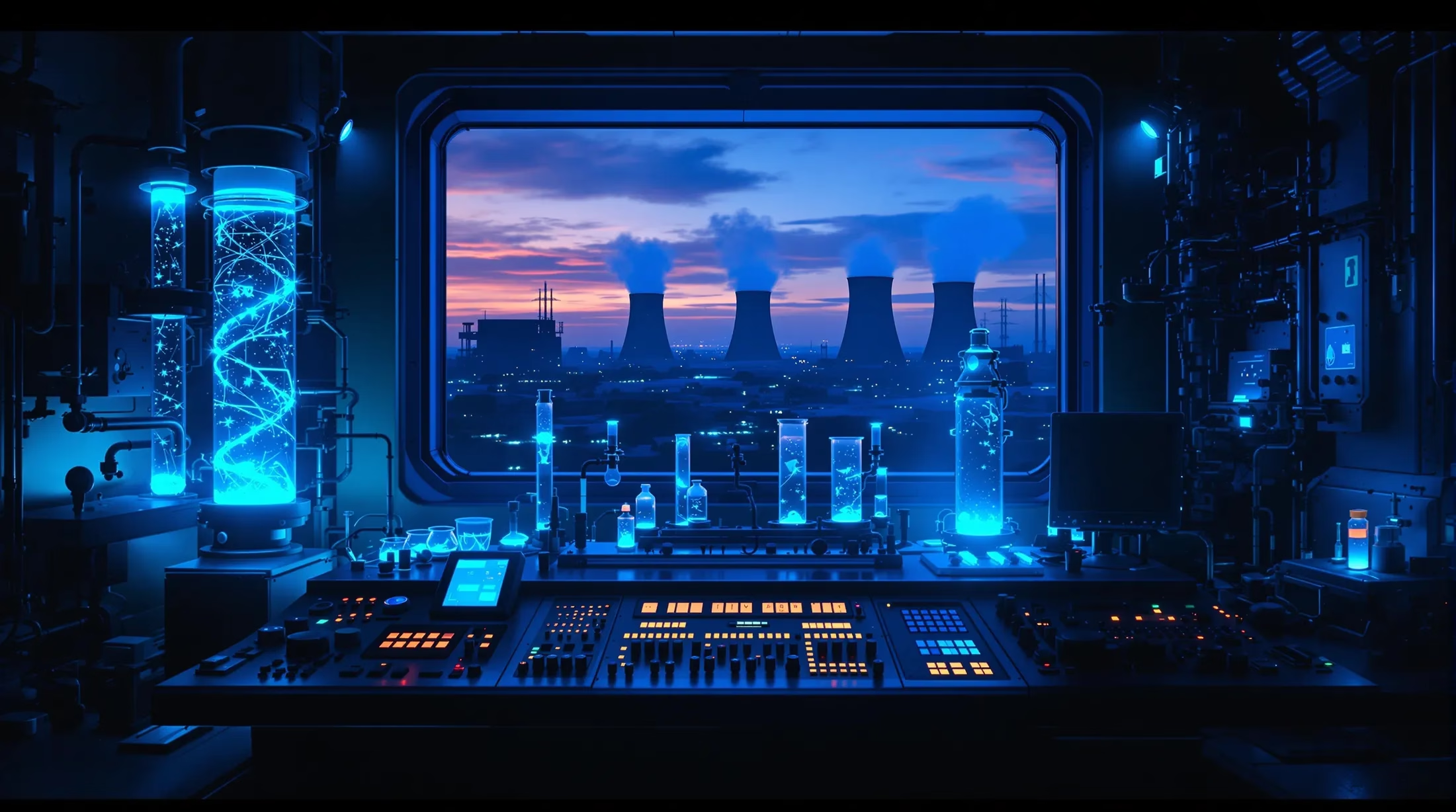Nuclear Engineer: Career Overview and Opportunities
Discover the fascinating world of nuclear engineering, where cutting-edge science meets practical applications that shape our future. From powering cities to revolutionizing medical treatments, nuclear engineers stand at the forefront of technological innovation. Let’s explore this dynamic field and the opportunities it presents.
What is Nuclear Engineering?
Nuclear engineering is a specialized field focused on harnessing nuclear energy through the processes of nuclear fission and fusion. It encompasses the study, development, and application of systems that utilize nuclear reactions to generate power, advance medical treatments, and support various industrial applications. At its core, nuclear engineering involves understanding how to safely release, control, and manage nuclear energy while addressing critical concerns such as radiation protection and waste disposal.
Nuclear engineers apply principles from physics, mathematics, and materials science to design and develop equipment, systems, and processes that leverage nuclear energy. They work with radioactive materials and nuclear fuels to create efficient, sustainable energy solutions while ensuring stringent safety protocols. The field requires meticulous attention to detail, as nuclear engineers are responsible for developing systems that operate with minimal environmental impact while maximizing energy output from nuclear reactions.
The Origins of Nuclear Engineering
Nuclear engineering emerged in the early 20th century following groundbreaking discoveries in nuclear physics. The field’s foundations were laid in 1938 when German scientists Otto Hahn and Fritz Strassmann first demonstrated nuclear fission by splitting uranium atoms. Shortly after, physicists Lise Meitner and Otto Frisch provided the theoretical explanation for this phenomenon, recognizing its potential for energy production. These discoveries triggered rapid developments during World War II, culminating in the Manhattan Project—a massive research initiative that produced the first nuclear weapons.
Following the war, nuclear engineering evolved toward peaceful applications with the launch of the “Atoms for Peace” program in the 1950s. This initiative redirected nuclear technology toward civilian uses, particularly electricity generation. The first commercial nuclear power plant began operation in 1956 in Calder Hall, United Kingdom, marking the beginning of nuclear energy’s contribution to the global power grid. Since then, nuclear engineering has expanded beyond power generation to include diverse applications in medicine, space exploration, and industry while continuously improving safety standards and efficiency.
Key Applications of Nuclear Engineering
- Power Generation – Providing 10% of global electricity through controlled fission reactions
- Medical Applications – Developing PET scan technology and radiation therapy equipment
- Military Applications – Powering submarines and aircraft carriers
- Space Exploration – Creating radioisotope thermoelectric generators
- Industrial Uses – Supporting radiography and materials testing
- Food Preservation – Implementing irradiation techniques
Roles and Responsibilities of a Nuclear Engineer
Nuclear engineers serve as critical professionals in managing, controlling, and advancing nuclear energy technologies. Their core responsibilities include designing innovative nuclear equipment, overseeing facility operations, and solving complex problems related to nuclear energy production and utilization. They apply specialized knowledge of nuclear physics, thermodynamics, and materials science to develop systems that safely harness nuclear power while minimizing environmental impact.
Research and Development in Nuclear Projects
Nuclear engineers at the forefront of research and development drive innovations that shape the future of nuclear energy. They design experimental reactors, conduct sophisticated computer modeling of nuclear processes, and develop new materials capable of withstanding extreme radiation environments. These professionals often work in specialized laboratories where they test hypotheses about improving nuclear efficiency, reducing waste production, and enhancing safety mechanisms for next-generation nuclear systems.
Managing the Nuclear Fuel Cycle
Nuclear fuel cycle management represents a core responsibility for many nuclear engineers, involving oversight of uranium from mining through final disposal. These specialists design fuel assemblies optimized for specific reactor types, perform complex neutronics calculations to predict fuel behavior, and develop strategies for maximizing energy extraction while maintaining safety margins. They analyze how fuel performs under various operating conditions and implement measures to prevent fuel failure during normal operation and potential accident scenarios.
| Fuel Cycle Stage | Engineering Focus |
|---|---|
| Mining and Processing | Extraction efficiency and environmental protection |
| Fuel Assembly Design | Optimization for specific reactor types |
| Operational Management | Performance monitoring and safety maintenance |
| Waste Management | Storage, disposal, and recycling solutions |
Ensuring Nuclear Safety and Security
Nuclear engineers implement comprehensive safety protocols through multiple protective layers within nuclear facilities. These protective measures include physical barriers, redundant safety systems, and sophisticated monitoring networks that identify potential issues before they become critical. Through detailed probabilistic risk assessments, they systematically evaluate and address vulnerabilities while implementing defense-in-depth strategies to ensure maximum safety.
- Physical barriers and containment systems
- Redundant safety mechanisms
- Real-time monitoring networks
- Emergency response protocols
- Continuous operational assessment
- International safety standard compliance
In the realm of security, nuclear engineers develop advanced protection measures against both physical and cyber threats. Their work encompasses the design of intrusion detection systems, stringent access control mechanisms, and precise material accounting protocols. The digital age has amplified the importance of cybersecurity, leading to the development of:
- Isolated control systems resistant to external interference
- Encrypted communication networks
- Cyber-resilient infrastructure
- Advanced material tracking systems
- International safeguard protocols
Educational Pathways to Becoming a Nuclear Engineer
The journey to becoming a nuclear engineer typically begins with formal education in nuclear engineering or related technical fields. A bachelor’s degree in nuclear engineering provides essential knowledge in nuclear physics, thermodynamics, materials science, and radiation protection. These programs combine theoretical studies with hands-on laboratory experience, preparing students for the complexities of nuclear systems.
Alternative pathways include starting with an Associate degree (AA or AS) at a community college before transferring to a university’s nuclear engineering program. This approach offers both cost efficiency and a solid foundation in mathematics and physics. Advanced positions in research or management typically require graduate-level education, with master’s and doctoral degrees providing specialized expertise and research opportunities.
Required Education and Skills
| Educational Requirements | Essential Skills |
|---|---|
| Advanced mathematics | Analytical thinking |
| Nuclear physics | Problem-solving abilities |
| Reactor theory | Attention to detail |
| Thermodynamics | Communication skills |
| Materials science | Team collaboration |
Top Universities for Nuclear Engineering
- United States:
- Massachusetts Institute of Technology (MIT)
- University of California, Berkeley
- Pennsylvania State University
- University of Michigan
- Texas A&M University
- International:
- Imperial College London
- University of Tokyo
- Swiss Federal Institute of Technology
Career Opportunities and Job Outlook for Nuclear Engineers
The nuclear engineering field projects a slight decline of 1% from 2023 to 2033, yet significant opportunities continue to emerge through replacement needs as experienced professionals retire or transition to other fields. While traditional nuclear power generation faces certain challenges, emerging sectors within the industry offer promising career paths.
- Stable employment opportunities in Department of Energy laboratories
- Consistent positions in U.S. Navy’s nuclear propulsion program
- Growing opportunities in small modular reactor (SMR) development
- Emerging roles in nuclear safety and security
- Positions in research and development of new nuclear technologies
Industries Employing Nuclear Engineers
Nuclear engineers find diverse employment opportunities across multiple sectors, each leveraging their specialized expertise in unique ways. The electric power industry serves as a primary employer, where utility companies operating nuclear plants require engineers for design, operation, maintenance, and regulatory compliance.
- Electric Power Industry – design, operations, and maintenance roles
- Government Agencies:
- Department of Energy
- Nuclear Regulatory Commission
- Department of Defense
- Healthcare Sector – medical imaging and radiation therapy
- Agricultural Industry – food irradiation and soil analysis
- Aerospace – space exploration power systems
- Research Institutions – fusion research and SMR development
- Universities – teaching and research positions
Geographic Concentration and Salary Expectations
| Region | Primary Opportunities |
|---|---|
| Pennsylvania, Illinois, South Carolina, New York | Operational nuclear plants |
| New Mexico, Tennessee, California, Idaho | National laboratories and research centers |
| Washington D.C. Metro Area | Regulatory agencies and policy organizations |
Nuclear engineers command competitive salaries averaging $65.79 per hour, reflecting their specialized expertise. Compensation varies based on:
- Geographic location
- Industry sector
- Education level
- Years of experience
- Specialized certifications
Future of Nuclear Engineering
Despite projections indicating a modest 1% decline in employment from 2023 to 2033, the nuclear engineering field stands at a transformative junction. Revolutionary technologies, particularly in fusion research, promise clean energy solutions without the traditional challenges of nuclear waste management.
The industry continues to evolve through innovations in:
- Small modular reactors (SMRs)
- Advanced nuclear fuel designs
- Passive safety systems
- Medical applications
- Space exploration technologies
- Environmental science solutions
Innovations in Nuclear Technology
The nuclear sector is experiencing unprecedented innovation across multiple fronts. Major breakthroughs include:
- Fusion Energy Developments:
- Commonwealth Fusion Systems initiatives
- ITER (International Thermonuclear Experimental Reactor)
- Advanced plasma containment systems
- Superconducting magnet technology
- Fission Technology Advancements:
- Fourth-generation reactor designs
- Passive safety features
- Microreactor development
- Digital twin technology
- AI-powered maintenance systems
Challenges and Opportunities in the Nuclear Sector
The nuclear industry faces several significant challenges while offering unique opportunities for innovative engineers:
| Challenges | Opportunities |
|---|---|
| Public perception issues | Stable careers in national laboratories |
| Regulatory hurdles | Navy nuclear propulsion programs |
| High capital costs | SMR and fusion technology startups |
| Complex curriculum demands | International market expansion |
| Technical complexity | Interdisciplinary career paths |







